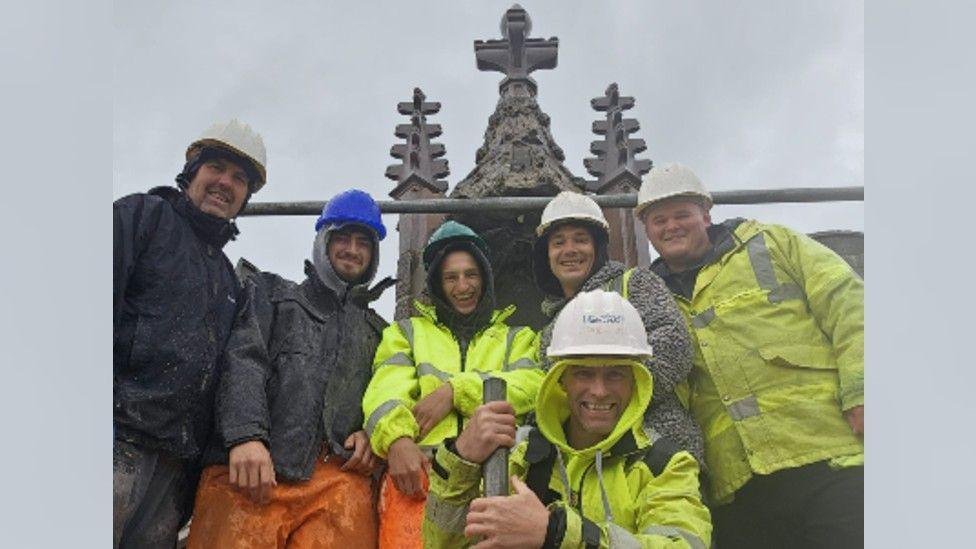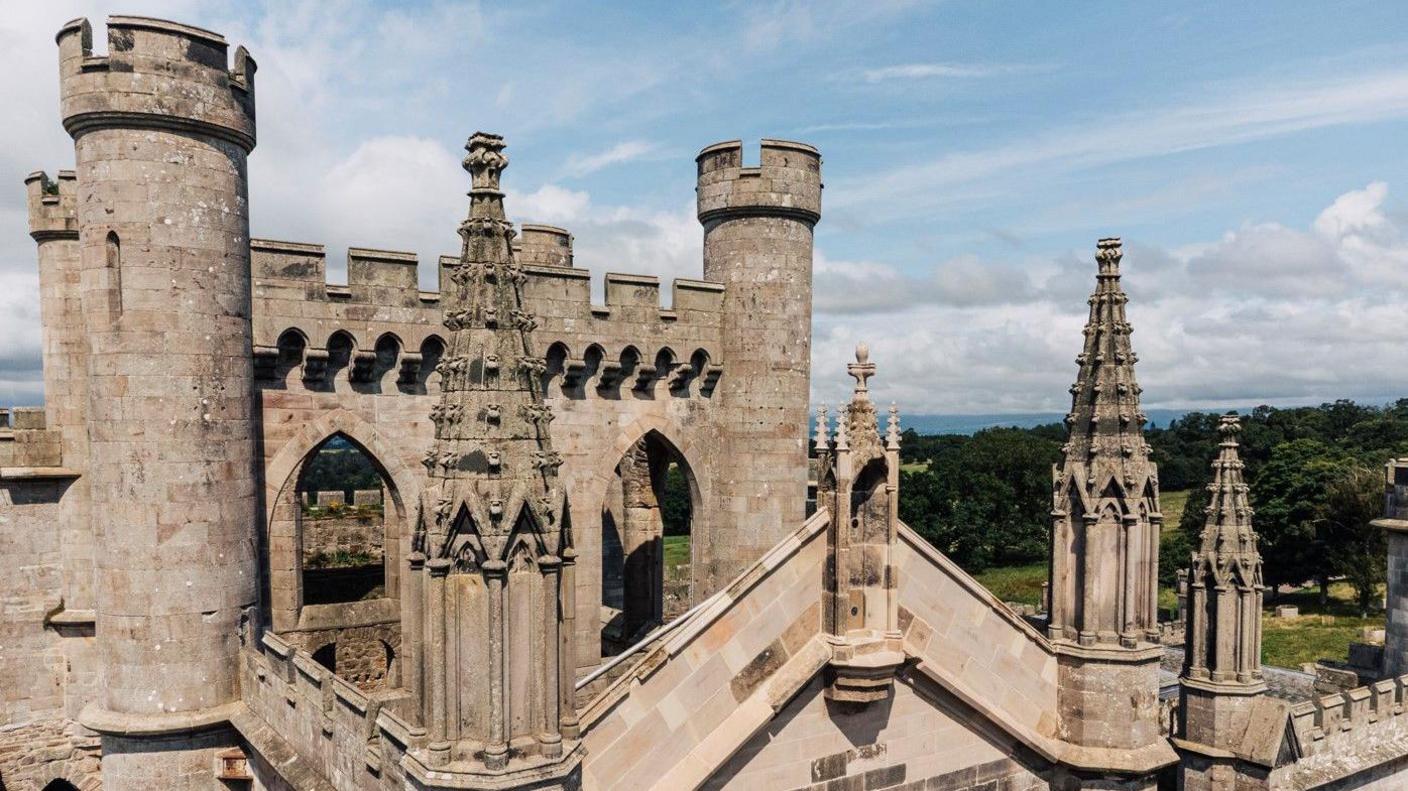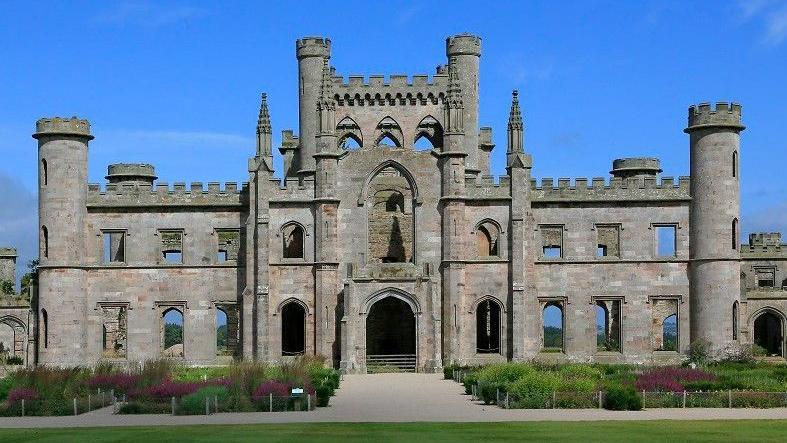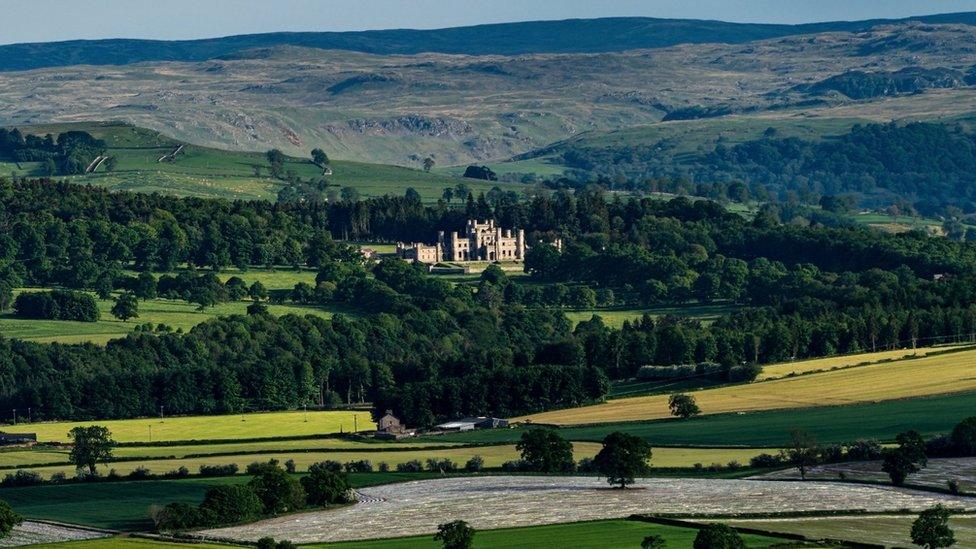Castle's pinnacle restored after two decades

Repairs to the castle's walls continue after the pinnacle was restored
- Published
A castle's pinnacle which collapsed in the early 2000s has been restored in a "huge step" towards removing the building from an at-risk register.
Lowther Castle, near Penrith in Cumbria, was placed on Historic England's Buildings at Risk list in 1999, with parts of the structure remaining on it.
"Since that initial listing, my principal ambition regarding the castle has been to have it removed from the register," owner Jim Lowther said. "The finishing of the pinnacle is a huge step in this direction."
He said he hoped repairs to the outer walls and the re-creation of the castle's silhouette would be completed by the end of the year.
Stonemason James Lightfoot, who repaired the pinnacle alongside brother Andre and their team of eight people, said "several different stars" had aligned for the renovation.
The pointed structure straddles the turrets that preside over the main entrance from the house into the gardens.
Old photographs were scoured through and architect Robert Smirke's original drawings were consulted.
"When the pinnacle collapsed in the early 2000s, they must have just scooped up all the fallen masonry and dumped it within the western range," Mr Lightfoot said.
"I came across this ornately carved stone sticking out of the mud and when we took a digger to the mound, we found it was that original central piece, more or less intact."

The pinnacle runs along the turrets that preside over the main entrance
Many other parts of the original pinnacle were also dug out and reused.
A steel frame, designed to ensure that the pinnacle would not topple again, was built and placed as well.
Mr Lightfoot said the most complex part of the job was creating the string course, a decorative stone band.
"We have put in plenty of string courses during our work here at the castle but this was almost half a metre deep and it had to go in at such an angle that the crane struggled to pick up each piece of stone correctly," he said.
"There were clues there, left from what had not fallen down, but it was tricky. We had to cut large pieces of timber and set plumb lines, look at the old photos over and over, tweak and visualise.
"And we only knew it was going to work when the main big hood was going on and you could see where the wall had to hit it. In the end, it was within a millimetre – perfect. That was something."

The castle was designed in the early 1800s
Mr Lightfoot said the team had "nothing but respect for the original masons" of the 19th Century building.
"In those days, it must have been all pulleys and winches and horsepower," he said.
"Everything is nevertheless inch-perfect."
The site opened to the public in 2012 and is visited by about 250,000 tourists every year.
Follow BBC Cumbria on X, external, Facebook, external, Nextdoor and Instagram, external.
Get in touch
Do you have a story suggestion for BBC Cumbria?
Related topics
- Published27 February 2023
